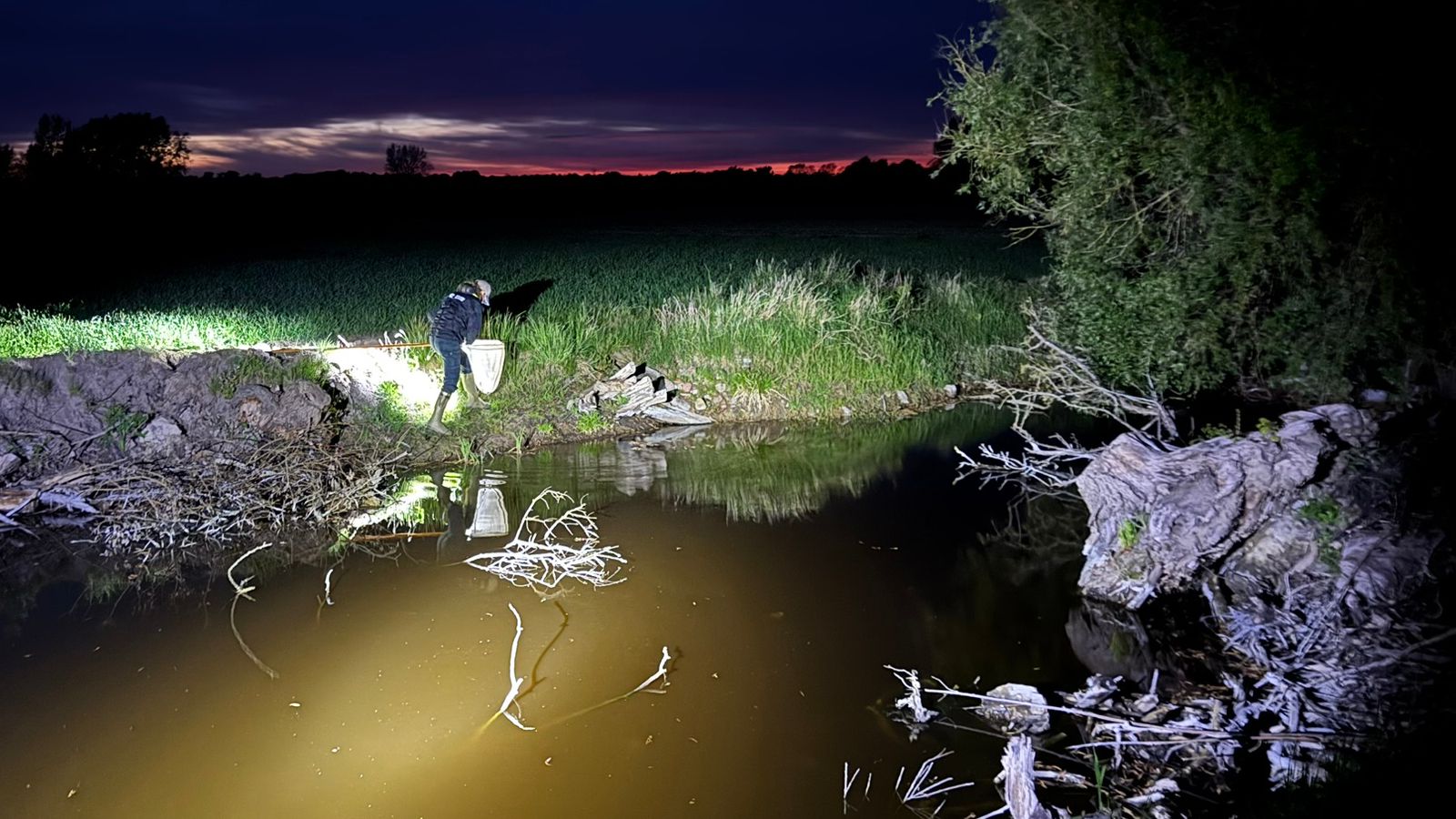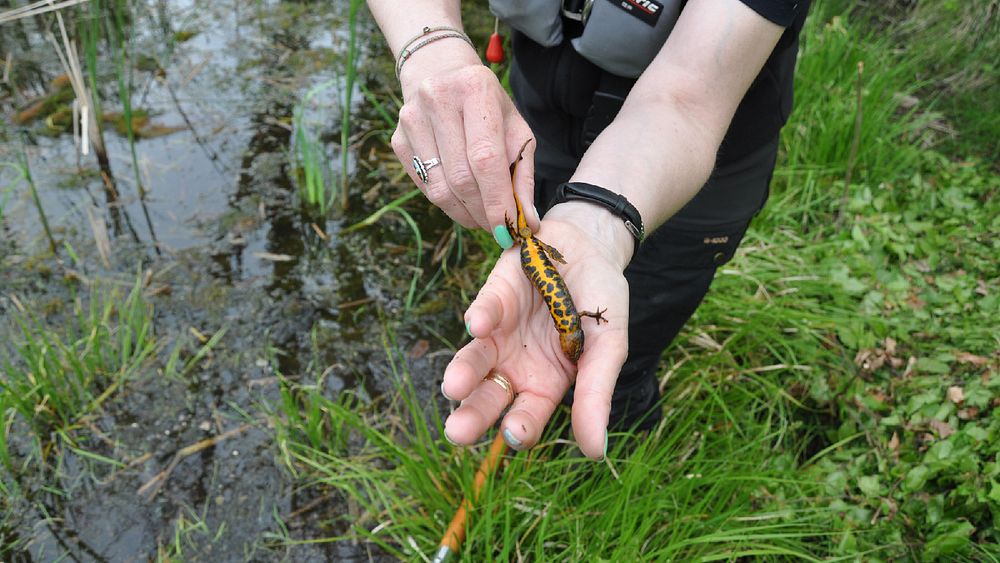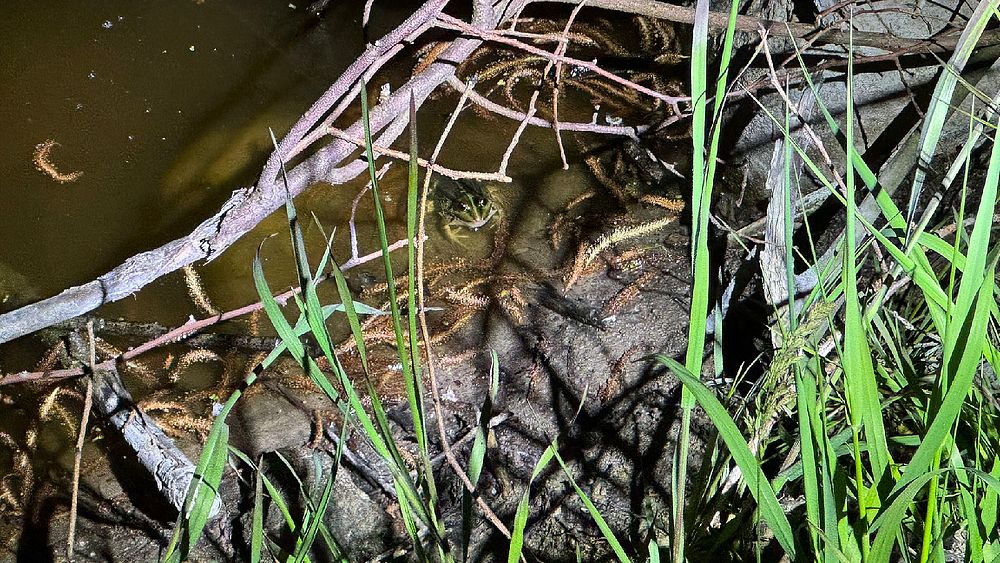The newt is here – and we’re taking care of it

There is silence. Just the sound of boots on wet grass and a croak somewhere in the darkness. We are in South Lolland on a warm evening in May, where biologists from Ramboll are using flashlights and nets to search for life in the waterholes. The goal is clear: to ensure that CarbonCuts’ work with CO2 storage has minimal impact on nature.
We are looking for nature’s indicators
In the spring of 2025, with expert help from the consulting firm Ramboll, we mapped over 100 waterholes and 70 forest areas in the project area around Rødbyhavn. This is part of the thorough environmental mapping that will form the basis for how our work with a possible CO2 storage facility on South Lolland can be done with the least possible impact on animals and plants.
Special focus is on amphibians – frogs, toads and newts – because they are good indicators of the state of nature. They are also protected by both Danish and European legislation

Rare species in the middle of the open countryside
The surveys have revealed several exciting findings. Among other things, biologists have recorded the rare great crested newt in both eastern and western parts of the area. Jumping frogs and green toads have also been found, both of which are species protected by the EU Habitats Directive. At one site, both eggs and tadpoles of jumping frogs were even observed – a sure sign that the species is breeding in the area

A green frog caught in the biologists’ sights. Photo: Kenneth Prehn
Bats and rare plants
It’s not just amphibians and frogs that have biologists’ attention. Bats are also in focus – not least because they use old trees and small forests as roosting and breeding sites. At Lidsø Estate, we have registered a little brown bat, and above a forest close to the ferry port we have observed water bats, which probably breed in the area
To the east of the ferry port we found the plant betony, which is on the list of rare plants in Denmark. This is yet another sign that there is more to South Lolland’s nature than meets the eye
Why all the caution
“We need to be sure that the Ruby project won’t impact nature unnecessarily,” says Charlotte Laurentzius , head of CarbonCut’s investigations in the area. “It’s about knowing the area and adapting the project to be considerate. Sometimes it can be small things. Like adjusting the location of installations or waiting with activities until after the amphibians have laid their eggs.”
The purpose of the fieldwork is not just to find species, but to ensure that CarbonCut’s and Project Ruby’s green transition work also takes into account the flora and fauna of the entire area.
Nature and the future
CarbonCut’s vision of storing CO2 safely underground can be an important step in the green transition. Of course, this requires that we constantly maintain the balance between necessary technological climate solutions – and respect for the landscape and nature of South Lolland. The fieldwork shows that there is something to take care of.


